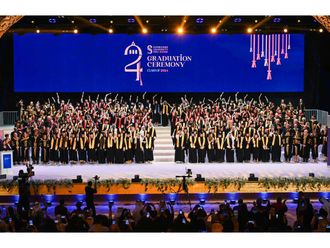
Families of Indian origin residing in the UAE and neighbouring Arab nations are well-acquainted with the EB-5 program – the United States Golden Visa equivalent – and regularly use this fast-track route to access America. The U.S. EB-5 Golden Visa program offers a relatively swift and secure route to acquiring U.S. residency and Green Cards for foreign investors, along with their immediate family members, encompassing spouses and children under the age of 21. Each application requires an investment of $800,000 in a pre-approved real estate project in the United States.
The popularity of this government immigration program among the Indian expat community in this region is attributed to the abundant advantages of the EB-5 program.
Since the introduction of new EB-5 legislation in March 2022, namely the EB-5 Reform and Integrity Act (RIA), the popularity of the program among Indian families has surged. The RIA created three new categories of reserved EB-5 visas called visa set asides. “Visa set asides are a lifeline for Indian nationals seeking expedited entry to the U.S. for their families,” says Shahriar Zamanian, known by Shai Zamanian, Director of The American Legal Center, the foremost experts on the U.S. Golden Visa program in the region. “The key to taking advantage of the reduced wait times is to file your EB-5 application quickly to be among the first in line.”
What Are Visa Set Asides?
Every fiscal year, the U.S. government designates 10,000 EB-5 visas for qualified individuals seeking lawful permanent resident status through capital investment in the United States. Prior to passage of the RIA, all 10,000 EB-5 visas were in the same category. The RIA created three new categories called visa set asides. 32 per cent of the total number of available EB-5 visas must be set aside for these new categories. Out of the 10,000 visas available annually for the EB-5 program, 10 per cent are set aside for applicants investing in high unemployment areas, 20 per cent for those in rural areas, and 2 per cent for those contributing to infrastructure projects.
The EB-5 visa category that existed prior to passage of the RIA is called the unreserved visa category and the three new visa set aside categories are called the reserved visa categories. A prospective EB-5 applicant has the option of filing their petition under any one of these four categories.
Importance of Visa Set Asides for Indian nationals
The EB-5 program imposes an annual cap on visas allocated to each country’s nationals. Not more than 7% of the total annual EB-5 visa allocation is accessible to any individual country. Nationality is determined based on an applicant’s country of birth, not citizenship.
Due to the annual cap, nationalities with high demand for the EB-5 program, such as Indian and mainland Chinese-born applicants, encounter retrogression in the conventional unreserved visa category. Retrogression entails a slowdown and backlog in processing applications for these nationalities due to the substantial number of applicants. According to the December 2023 Visa Bulletin published by the United States Department of State, the unreserved category is oversubscribed for Indian nationals, meaning that existing EB-5 applicants can only obtain an I-526 approval if their priority date, i.e., the filing date of their EB-5 application, is earlier than the final action dates listed on the Visa Bulletin chart.
The December 2023 Visa Bulletin shows that the three reserved visa categories (visa set asides) are all current, meaning that there are no additional wait times. “While prospective investors in the three reserved categories will not face retrogression for the time being, this is expected to change in the future given high demand from Indian nationals,” explains Shai. “There are approximately 800,000 Indian-born workers in the U.S., most of whom hold H-1B visas. Most of these individuals are turning to the EB-5 program to obtain their Green Cards and they are filing under the new three reserved categories to take advantage of faster processing times.”
According to U.S. government statistics, there were a total of 1,585 EB-5 applications (I-526/I-526E) petitions filed from April 2022 to April 2023. Out of the 1,585 applications received, 93 per cent were filed in the reserved category, with an overwhelming percentage of applications – 69 per cent – filed under the high unemployment area category. This indicates that the highest demand is for the newly reserved categories, driven by its additional benefits, particularly expedited processing. Applicants from China and India demonstrate the most significant demand for visa set asides.
However, considering the substantial volume of applications, experts in the EB-5 industry anticipate that the reserved visa categories will also eventually experience retrogression. Therefore, families that invest now are placed at a great advantage compared to those that file later.
Consult The American Legal Center
The American Legal Center is the premier immigration consultancy in the GCC region with their headquarters based in Dubai. With over a decade of experience in the EB-5 industry, the team of U.S. licensed lawyers and professionals at The American Legal Center are laser focused on the U.S. Golden Visa program. Their commitment to excellence is underscored by a client-centric approach, ensuring personalized guidance and support throughout the EB-5 application process.
To learn more about the EB-5 program and projects that qualify for the three new reserved visa categories, you can https://www.america.ae/contact-us/contact their team today for a complimentary consultation and embark on your seamless journey toward U.S. residency.












